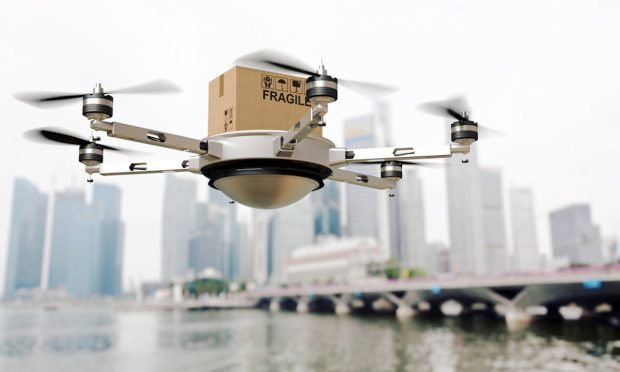Drone Delivery Expands as Robots, Humans Race to Meet Consumers’ On-Demand Food Needs

As consumers, restaurants and third parties continue to struggle with the economics of delivery, the race to find alternatives to using human drivers is heating up. For its part, Flytrex, a Tel Aviv-based drone delivery company that promises to fulfill food orders within five minutes, announced on Tuesday (Oct. 26) that it is expanding to its third market in Holly Springs, North Carolina.
The town joins the company’s other two North Carolina locations, Fayetteville and Raeford. Flytrex has partnered with Brinker International, the parent company of Chili’s Grill & Bar and Maggiano’s Little Italy, among others, for its first restaurant deliveries.
“We are soaring into a new age in which smart cities harness the immense power of drones to maximize efficiency and feed consumers’ growing appetite for on-demand,” Yariv Bash, CEO and co-founder of the drone delivery company, said in a statement.
Certainly, there is a high demand to find a better solution for food delivery. Research from PYMNTS’ Restaurant Readiness Index, created in collaboration with Paytronix, finds that online and phone delivery orders cumulatively make up more than 20% of all restaurants’ sales and almost a quarter of QSRs’. Yet major delivery services continue to operate at a loss, restaurants continue to struggle with the high fees these services charge, drivers continue to struggle to make enough to get by and consumers continue to be put off by the high cost.
Read more: QSRs’ Lagging Loyalty-Reward Investment Hurts Innovation and Sales
Drone delivery is just one of the ways businesses are looking to resolve this problem. Companies in the space promise that the technology is already there and that the only hurdle standing in the way of widespread expansion is the wait for Federal Aviation Administration (FAA) approval — but in the meantime, some are turning to other forms of automation.
Take, for instance, the sidewalk robot. Dmitry Shevelenko, co-founder and president of last-mile logistics robotics company Tortoise, told PYMNTS in an interview that the company’s “founding contrarian insight” was that there are versions of robotic delivery that are possible right now. He described the timeline for the evolution of automated vehicles as “low speed before high speed, light mass before heavy mass, and remote control before autonomous.”
Related news: Tortoise Shifts Focus of Automated Delivery to the Present
Sidewalk robots move fairly slowly. Shevelenko noted that for now, the company’s focus is on grocery and convenience, where an order fulfillment time of 30 minutes or an hour is still acceptable. As automation adoption becomes more widespread, it is possible that drone delivery will be more popular for hot food orders, while sidewalk robots could be the go-to for categories that do not require the same immediacy.
Even delivery services with human drivers are getting better at meeting consumers’ instant needs, though the labor costs remain a challenge. What began with enterprising micro-mobility startups has become a mainstream trend, with Uber announcing on Tuesday (Oct. 26) that it is launching a 15-minute grocery delivery service in Paris in partnership with French grocery chain Carrefour.
See also: Uber Drives 15-Minute Grocery Delivery in Paris
“What we’re excited about is the chance to change the concept of how people shop,” Zach Dennett, co-founder of New York 15-minute grocery delivery service Jokr, told Karen Webster in an interview. “We’re seeing customer behavior is very sticky, because once [they] stop planning ahead and [they] realize that [they] can just make the grocery choices [they] want the minute [they] want them, it’s kind of hard to go back to that planning.”
Read more: No Joke: Jokr’s 15-Minute Grocery Delivery out to Change Consumer Shopping Habits
